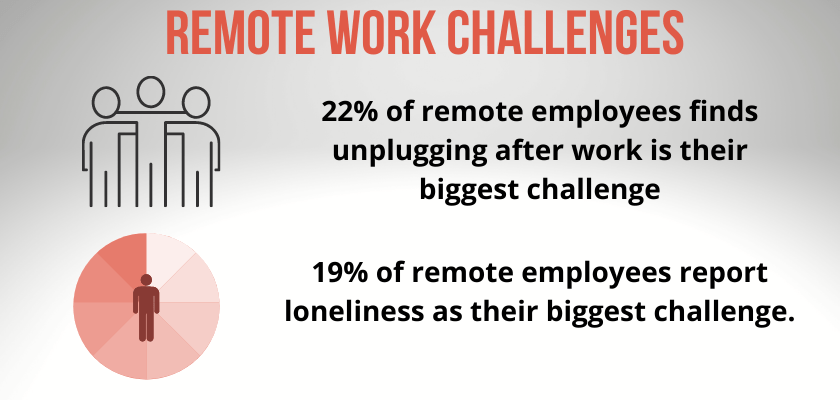Is onboarding new employees a difficult task? What are the best ways to do remote onboard? Here are creative ways to onboard new employees!!
The entire world is in the grip of COVID-19. It has hit a human life and businesses harder. So, organizations are adopting remote work culture to overcome various challenges.
Such challenges include health risks, financial risks, working remotely risks, hiring and welcoming risks, and much more, etc. According to the survey

Among all those risks, remote work and onboarding new employees require way more concentration than others. Indeed, even companies with solid onboarding measures are struggling because of the pandemic situation. The change from face-to-face to virtual process, making it harder for both employers and employees to come at it the right way.
HR experts are in a dilemma whether they’re giving new employees all that they need or their processes and instructions are sufficient for the new employees? Countering all those dilemmas and questions of the HR team going through, I have answered them in this blog. Let’s start with –
Highlights of Contents
Is Remote Onboarding Similar to the Physical Onboarding Process?
What is Onboarding?
Onboarding is an official process of recruiting employees for an organization. It holds up all procedures for introducing new employees to the administration and the rest of the team. It includes various factors and is termed a new employee checklist:
- Conversations with HR
- Meeting with Direct, Managers, Reporting Head
- Team involvement
- Ready desk and equipment
- Introducing with company’s policies and practice
- Introduction to technologies, tasks, and communication apps.
In a survey it has found, 45 percent of new hires fail within two years. The main reason for the failure is inaccurate job fit, company culture, or neglecting to plan and execute a strategic onboarding process?
The onboarding is not a one-day process or does not end up in the first week. It is a continuous process to make sure that the new employees are comfortable with the working environment. Therefore, it is divided into four phases:
- Pre- onboarding,
- Orientation,
- First Agreement
- Ongoing Support
Also Read: How to Do Employee Monitoring and its Advantages and Disadvantages?
How is Remote Onboarding Different from Physical

Onboarding?
The only difference between physical and remote onboarding is that in remote we welcome and connect new employees virtually. We make use of technology and tools to meet all the aspects of onboarding processes. There are some amazing tools used for Remote Employee Onboarding:
- Slack
- ProProfs Knowledge Base
- Zenefits
- Scoro
- Gusto
- Asana
Check: Employee Monitoring Software
Tips to Onboard New Employees Remotely
Do you have any idea how to improve employee retention and productivity of new employees?
Fact says, 82% of employee retention and 70% productivity of a new hire get improved if an organization has a strong onboarding process. This means a good onboarding process can keep you away from losing new employees before they actually get settled in. Here are some amazing tips to make your remote onboarding process stronger.
1. Start with a pre-onboarding process

It might sound easy, but from a remote employer’s view, it is tougher than ever before. In a survey, it was found there are nearly 54 activities to complete while onboarding new employees. These activities are helpful in building up trust for remote team achievement. You should have a pre-sample onboarding plan for new employees. Prepare new employees’ checklists before you are willing to go. There are few pre-onboarding processes you must be ready with for remote onboarding:
- Relationship-building and companion networking are crucial to each of us, so connect efficiently using phone call, or video call right away.
- Communicate all the legal factors such as offers and contracts before your new remote employee is a convenient start.
- Let them learn the necessary skills and tasks connected to their jobs.
- Send emails consisting of contracts and forms and collect all digital signatures down as soon as possible.
- Send them a welcome email.
Check: On-premise Employee Monitoring Software
2. Share significant documents and information using digital tools
Make digital adaptations of the basic employees’ records. You may share with new recruits on their first day, including worker handbooks, arrangements, reports with frameworks that your organization operates, culture decks, or fundamental vision your company pursues.

Having these assets can enable your new recruit to all the more likely to understand the organization and what is expected from them as workers. It can likewise help establish a framework for fitting in with the fellow office colleagues.
You can make onboarding videos, PPT of each document that describe the clear picture of commitment. These videos should be explainers on what every shared document is all about.
This way you may get more close to your recently recruited employee. At the point when they’re ready to get introduced with your group and your business, they can feel more associated with the work they’re doing.
3. Schedule a virtual meeting with head officers and teammates

Inviting a new person to the group is a major occasion for the entire organization. While working remotely, you have a choice to use online tools to make the process more effective. Such tools include meeting scheduling applications, and video conferencing tools. These are overly used remotely to ensure the significant onboarding gatherings happen essentially.
In any case, more importantly, keep the conferences, and meetings more appealing and engaging. Maintain your first impression as a long term impression of your organization. This way, you can create a strong remote onboarding process. It is considered an ideal approach to begin.
So, ask your office colleagues to present themselves so that new individuals get to learn the names and faces of who all others are working with them.
- Deliver complete information about the organization: its story, strategic objectives, what are their goals. Where do they stand? What are their future goals? and more.
- How all office activity actually functions: the procedure, work processes, individuals, and cycles; how the task is distributed, how they perform where they fit in.
- The group meetings help the new workers to know whom they can approach with questions and concerns.
Read more: Employee Scheduling Software for Agencies
4. Provide training on tools and processes

Onboarding can be overpowering, so it’s imperative to give your new worker space during their initial scarcely few weeks just to handle everything.
To begin with, give access to everything your new employees need. Provide the training and brief introductions for each tool your company is using. And also side by side ask for feedback on whether they are getting it or not.
An introduction to each tool and documentation is important. New workers want to know the purpose of distinct communication channels. So make sure to introduce them as early as possible.
5. Provide all necessary equipment

Your new hire needs to have the appropriate equipment to begin their job. So ask your new employees whether they have a system or not. If not make sure to provide them with a laptop, desktop, keyboard, mouse, cables, and other equipment. Keep a checklist available with you, so that you don’t skip anything.
Additionally, give them intensive guidelines on what applications they should download, what devices they should require utilizing, and how they can gain proficiency with everyone. Make their email or other significant business accounts and ensure they’re running appropriately before the recently recruited employee needs them.
At long last, try to add them to any email chains, or other correspondence channels so they never miss a significant message.
Also Read: Cybersecurity Tips for Remotely Working Employees
Final words
The remote onboarding process does not end up in a week. There are tons of things you can do here – besides the working hours, you can arrange games, quizzes, and snacks to keep your new employees engaged enough. For meaningful interaction come up with creative ideas to perform different activities.
To assist them with feeling welcome and to guarantee they’re getting the greater part of their onboarding experience, you need to build up a customized onboarding plan for each fresh recruit. Keep in mind, if an onboarding program hampers the employee’s capacity to play out their activity, it will probably cause pressure, tension, and self-question. That is a surefire formula for early turnover.
Frequently Asked Questions
Q1- What is onboarding?
A1- Onboarding is the introductory process of entertaining new employees to management and the rest of the team. It includes 4 phases :
- Pre- onboarding,
- Orientation,
- First Agreement
- Ongoing Support
Q2- Why do organizations need strong onboarding strategies?
A2- Onboarding is among the most powerful factors with regard to employee experience. Organizations that have compelling onboarding measures set up accomplish 2.5 times better revenue growth and 1.9 times the net revenue as compared to organizations with poor onboarding strategies.
Know more: How to Use Timesheet Reports For Superior Project Results
Q3- Is there any difference in remote and physical onboarding?
A3- There are no particular changes in the remote and physical onboarding process. The only difference is that we welcome new employees virtually using digital tools. Some of the popular remote onboarding tools are as follow:
- ProProfs Knowledge Base
- Zenefits
- Scoro
- Gusto
- Asana
Q4- What are the 4 phases of onboarding?
A4- An effective onboarding process carries 4 different phases.
- Pre- onboarding
- Orientation
- First Agreement
- Ongoing Support
Q5- How to onboard new employees remotely?
A5- In order to have a successful remote onboarding process, companies should consider these creative ways to onboard new employees:
- Send a welcoming email to all new employees.
- Share videos & PPT to new employees to know the rules and regulations of your company.
- Online training: Ask seniors to provide online training to your new employees.
- Use Skype, Zoom for the group meetings.
